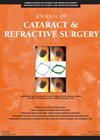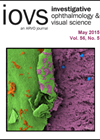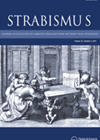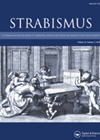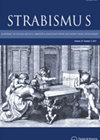You searched for "hyperopia"
Prediction errors of formulas in optical biometers
This study was conducted retrospectively in a private practice setting. Nine formulas were compared for prediction error (postoperative spherical equivalent (SE) minus, predicted SE calculated by each formula), using two optical biometers (Lenstar – optical low coherence reflectometry (OLCR) and...The approach to angle-closure glaucoma
1 October 2016
| Kaivon Pakzad-Vaezi
|
EYE - Glaucoma
Further to my last article in Eye News (print issue) describing the diagnostic approaches to various clinical scenarios in glaucoma, the approach to angle-closure glaucoma (ACG), a situation terrifying for patient and registrar alike, will be discussed. Please refer to...
Surgical treatment of high myopia
Although several excellent modalities are available for correcting high myopia, the surgical treatment of this condition remains one of the biggest challenges for refractive surgeons; this group of patients is often very dependent on contact lenses. If these patients become...Strabismus in thyroid eye disease
Pathogenesis Thyroid eye disease (TED) is an auto-immune condition, in the initial phase there is lymphocytic infiltration and oedema of the extraocular muscles with deposition of glycosaminoglycans and hyaluronic acid and adipogenesis, which can lead to an increase in the...Breakthroughs in the genetics of angle-closure glaucoma
1 April 2017
| Sancy Low, Paul J Foster (Prof)
|
EYE - Glaucoma
Angle closure glaucoma (ACG) is not widely known to be a familial condition, yet the recent explosion of genetic data and large scale genome wide investigations have confirmed at least 13 genetic loci associated with ACG [1], and provided some...
Sustained elevation of extracellular ATP in chronic glaucoma
1 August 2015
| Wai Siene Ng
|
EYE - Glaucoma
Although adenosine 5′-triphosphate (ATP) release from retinal neurons and astrocytes has been demonstrated in short-term increases in intraocular pressure (IOP); such as in aqueous humor of humans with primary acute angle closure glaucoma, the response in chronic IOP elevation was...
The ROP Network: a south-south collaboration to improve care for premature babies
4 October 2023
| Aeesha NJ Malik, Dupe Ademola-Popoola, Sucheta Kulkarni
|
EYE - Paediatrics, EYE - Strabismus
Retinopathy of prematurity (ROP) is a disorder of the immature preterm retina and a leading cause of preventable, irreversible blindness in children. There are 15 million preterm births annually, and over 32,000 neonates became blind from ROP in 2010 [1]....
Iranian prevalence of strabismus
There is little prior evidence on prevalence of strabismus in Iran. Thus, this study was undertaken to investigate the prevalence of strabismus types in Azad University students aged 18-25 years in South West Iran. A total of 752 of 826...The results of the last survey Feb23
3 February 2023
| Amar Alwitry
|
EYE - General
*Please be aware that this data does not form part of a peer reviewed research study. The information therein should not be relied upon for clinical purposes but instead used as a guide for clinical practice and reflection. For the...

